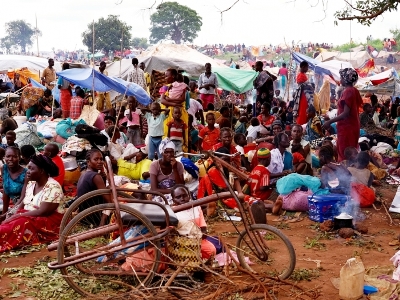S. Sudan: IOM says providing health, shelter aid in volatile areas
February 25, 2017 (JUBA) – The International Organisation for Migration (IOM) said it is providing emergency health care and shelter assistance to South Sudanese forced to flee their homes due to violence in volatile areas of the war-torn nation.

The kits, the agency said, will include blankets, nylon and rubber rope, plastic sheeting, a kanga (cloth) and a large carrying bag.
Nyal, in Unity’s Panyijiar county, has been hosting IDPs from surrounding counties since a military offensive in the area in early 2015. The resurgence of conflict in July 2016 prompted additional displacement in central and southern Unity, with many IDPs either fleeing north toward the Bentiu Protection of Civilians (PoC) site or toward Nyal, which has remained relatively stable.
IDPs in Nyal are living in very difficult circumstances, having fled with little-to-no belongings. They are largely relying on support from local host communities, where already limited resources are rapidly becoming exhausted.
Panyijiar is located in one of the most food insecure areas of South Sudan. The county is classified as facing emergency level food insecurity, meaning that without humanitarian assistance, some families could be facing famine conditions today.
IOM is currently collaborating with the UN World Food Programme (WFP) to biometrically register the population in Nyal to inform humanitarian response planning and distributions for the area. The exercise is expected to be complete by April.
In Central Equatoria, which continues to experience episodes of fighting, an IOM rapid response team completed a five-week mission on 23 February to provide emergency health care to over 30,000 IDPs sheltering in volatile Kajo Keji County, west of Kajo Keji town, at IDP sites in Ajio, Kerwa and Logo. IDPs in the area fled fighting in nearby counties, and the majority of reported multiple displacements.
“Families ran from their homes with next to nothing, leaving behind their farms and livelihoods,” said IOM Health Rapid Response Team Coordinator, Derebe Kintamo.
“Within three weeks of displacement, our clinics began seeing increasing numbers of cases of malnutrition among children under five. We coordinated with a nearby medical centre to ensure cases of acute malnutrition received prompt treatment,” he added.
The team reportedly conducted over 7,700 health consultations, providing general health care, vaccinations against common diseases, nutrition screening and maternal health care. On completion of the mission, IOM handed over responsibility for the three clinics to the American Refugee Committee and the County Health Department.
In South Sudan, one in every four people has been forced from his or her home due to the crisis that broke out in December 2013. IOM emergency aid operations aim to reach vulnerable populations both in displacement sites and remote areas, many affected by multiple waves of conflict and displacement. In 2017, relief agencies are trying to reach 5.8 million of 7.5 million people currently in need of humanitarian assistance.
(ST)
